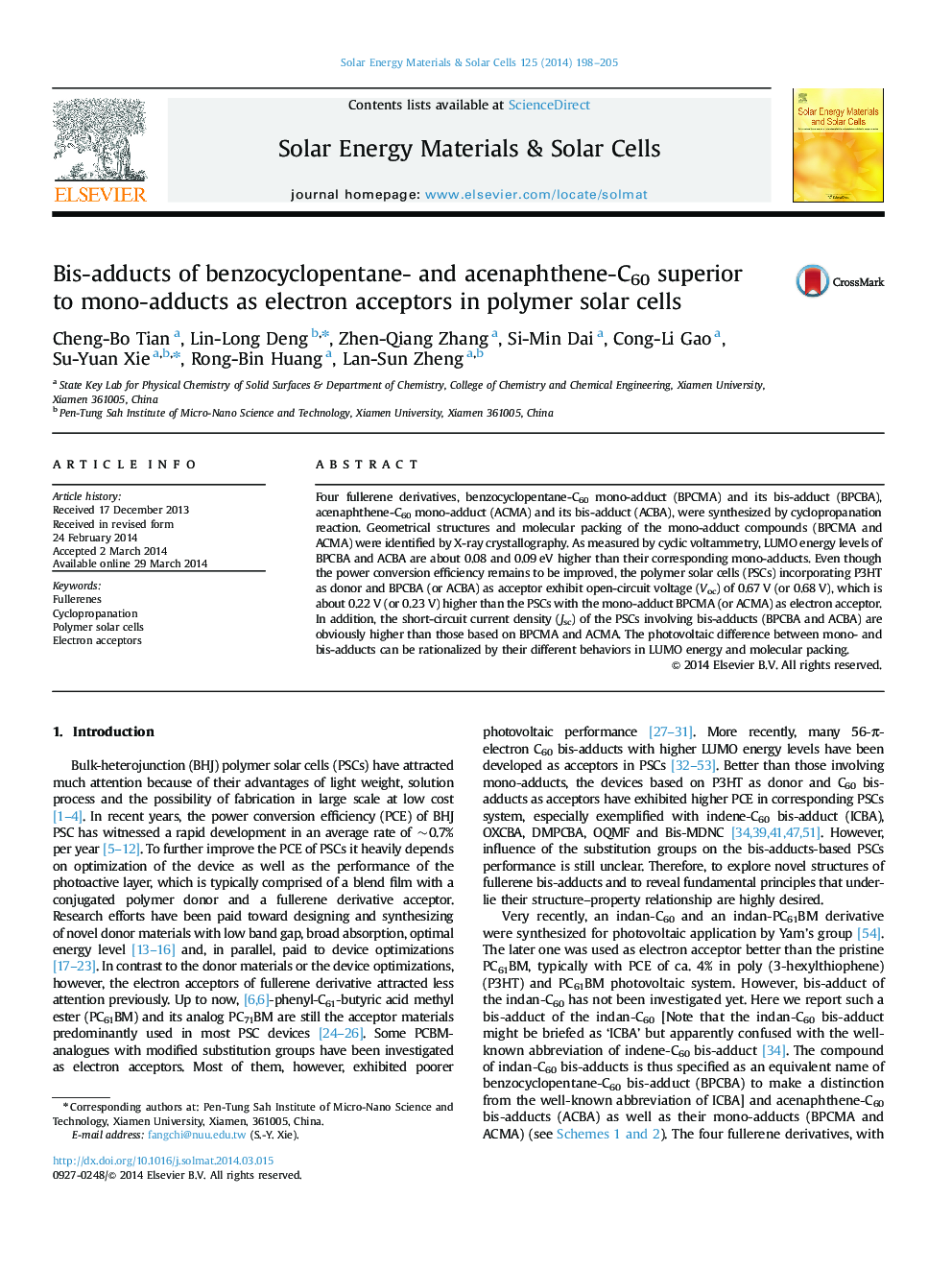| Article ID | Journal | Published Year | Pages | File Type |
|---|---|---|---|---|
| 78102 | Solar Energy Materials and Solar Cells | 2014 | 8 Pages |
•Geometrical structures and molecular packing of well-defined fullerene derivatives were identified by X-ray crystallography.•Bis-adducts of fullerenes have higher LUMO energy levels than mono-adducts.•High open-circuit voltages and short-circuit current density benefit from high LUMO level and proper packing of fullerene molecules.
Four fullerene derivatives, benzocyclopentane-C60 mono-adduct (BPCMA) and its bis-adduct (BPCBA), acenaphthene-C60 mono-adduct (ACMA) and its bis-adduct (ACBA), were synthesized by cyclopropanation reaction. Geometrical structures and molecular packing of the mono-adduct compounds (BPCMA and ACMA) were identified by X-ray crystallography. As measured by cyclic voltammetry, LUMO energy levels of BPCBA and ACBA are about 0.08 and 0.09 eV higher than their corresponding mono-adducts. Even though the power conversion efficiency remains to be improved, the polymer solar cells (PSCs) incorporating P3HT as donor and BPCBA (or ACBA) as acceptor exhibit open-circuit voltage (Voc) of 0.67 V (or 0.68 V), which is about 0.22 V (or 0.23 V) higher than the PSCs with the mono-adduct BPCMA (or ACMA) as electron acceptor. In addition, the short-circuit current density (Jsc) of the PSCs involving bis-adducts (BPCBA and ACBA) are obviously higher than those based on BPCMA and ACMA. The photovoltaic difference between mono- and bis-adducts can be rationalized by their different behaviors in LUMO energy and molecular packing.
Graphical abstractFigure optionsDownload full-size imageDownload as PowerPoint slide
